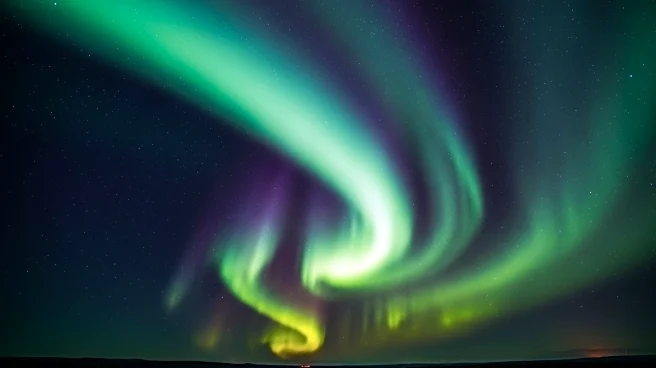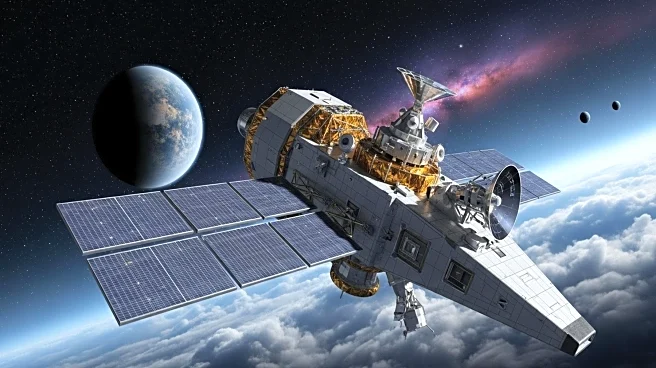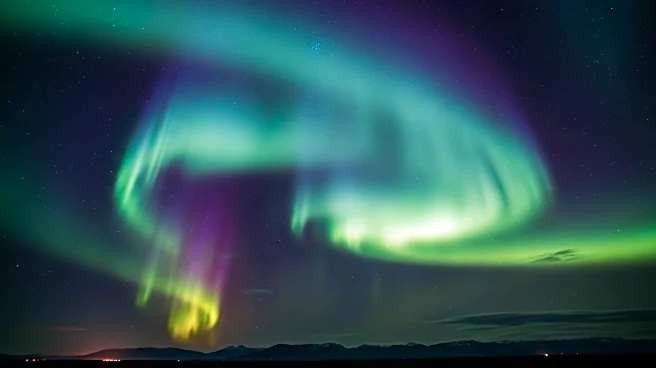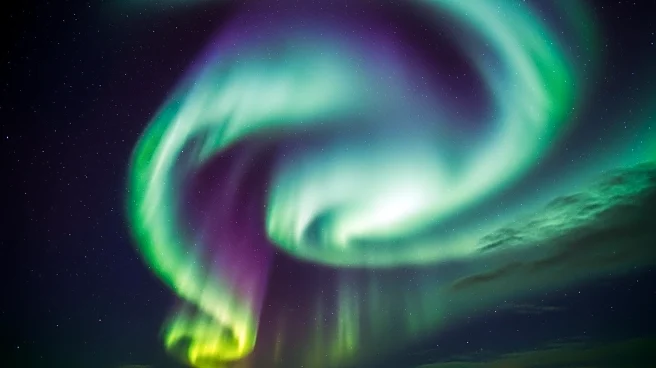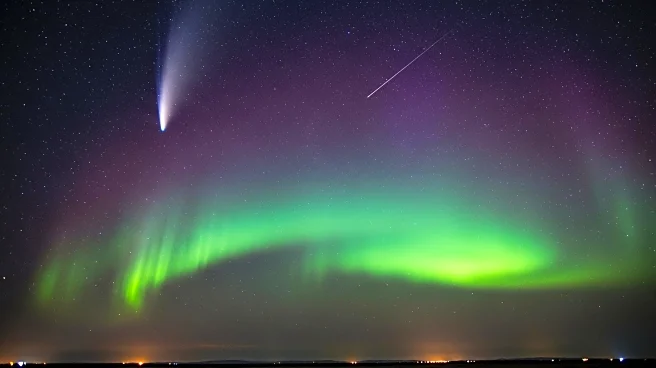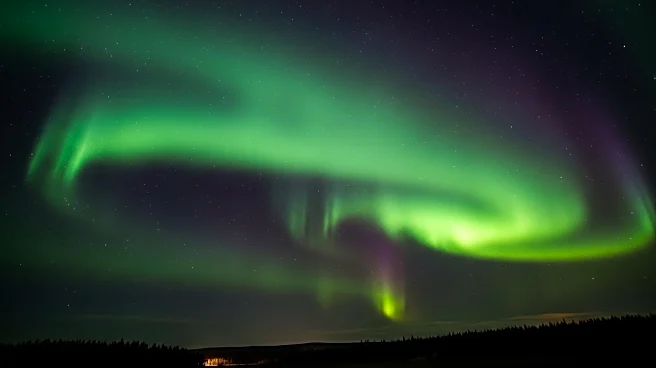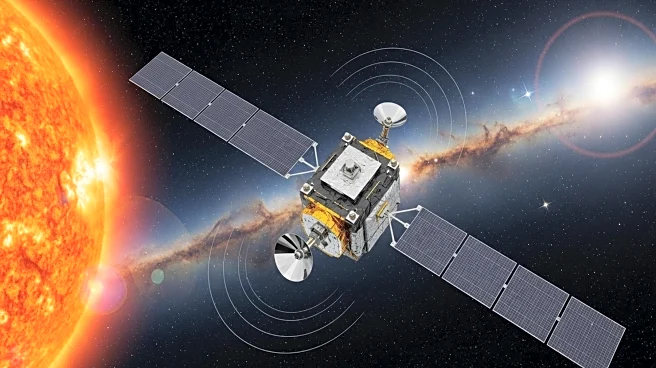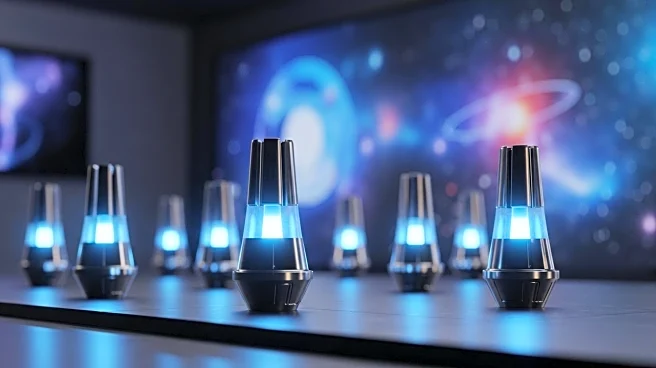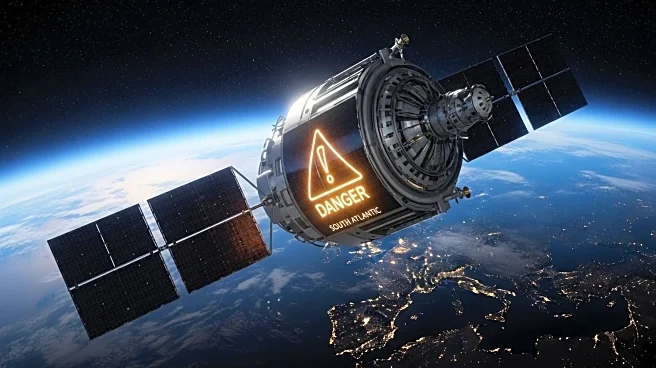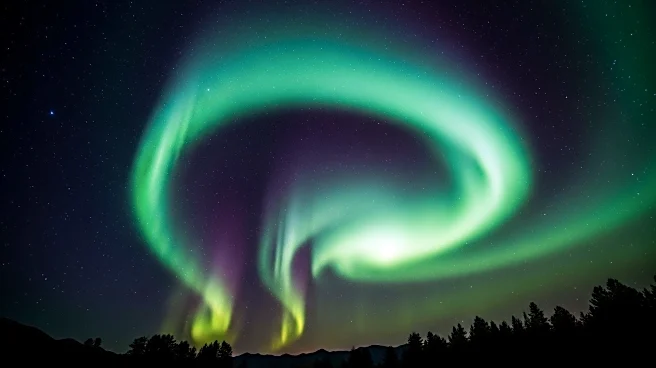What's Happening?
Solar physicists are forecasting an increase in auroral activity over the next two years as the sun enters a turbulent decline phase. This period follows the solar maximum, characterized by heightened sunspot activity and solar eruptions. As the sun transitions towards solar minimum, long-lived coronal holes become more prevalent, releasing high-speed solar winds that can trigger geomagnetic storms. These storms are expected to produce impressive auroras visible from Earth. Experts, including Pål Brekke from the Norwegian Space Agency, suggest that the peak auroral activity occurs a few years after solar maximum, offering several years of high aurora activity. The declining phase of the solar cycle is marked by increased geomagnetic storms, providing favorable conditions for aurora chasers.
Why It's Important?
The anticipated increase in auroral activity holds significance for both scientific communities and enthusiasts. For scientists, this period offers a unique opportunity to study geomagnetic storms and their effects on Earth's magnetic field. The increased auroral activity can also impact satellite operations, navigation systems, and communication technologies, as prolonged geomagnetic storms can interfere with GPS networks and radio signals. For aurora enthusiasts, the next few years promise spectacular displays, enhancing astrotourism and public interest in space weather phenomena. The potential for powerful geomagnetic storms could lead to auroras visible in regions not typically known for such displays, broadening the scope of aurora observation.
What's Next?
As the sun continues its decline towards solar minimum, scientists and aurora chasers will closely monitor solar activity for signs of the predicted 'last gasp' finale. This phase may feature complex sunspot groups capable of releasing powerful eruptions, potentially leading to extreme geomagnetic storms. Stakeholders in satellite and communication industries will need to prepare for possible disruptions caused by these storms. Additionally, public interest in aurora viewing may increase, prompting travel and tourism sectors to capitalize on the heightened activity. Researchers will continue to study the sun's behavior to better predict and understand the implications of these solar phenomena.
Beyond the Headlines
The increased auroral activity during the sun's decline phase highlights the interconnectedness of solar and terrestrial phenomena. It underscores the importance of space weather forecasting in mitigating risks to technology-dependent sectors. The potential for auroras to be visible in atypical regions may also influence cultural perceptions of natural phenomena, fostering a greater appreciation for the dynamic nature of Earth's environment. Long-term, this period could lead to advancements in space weather prediction models, improving preparedness for future solar cycles.

